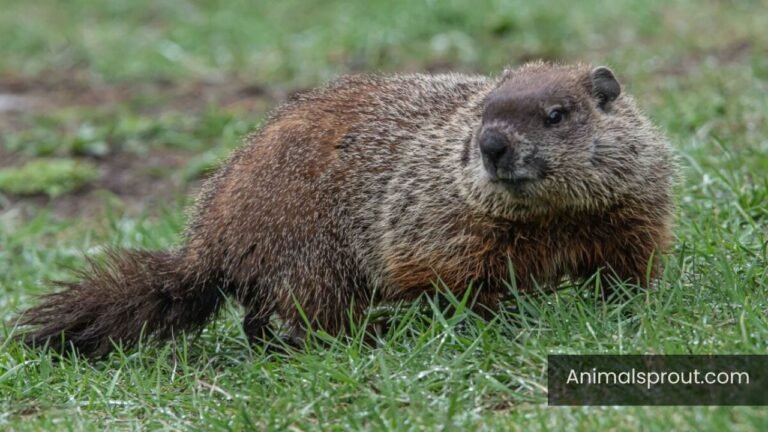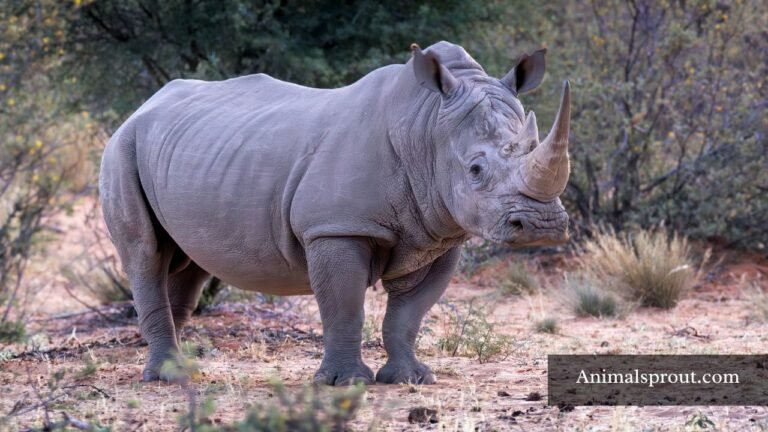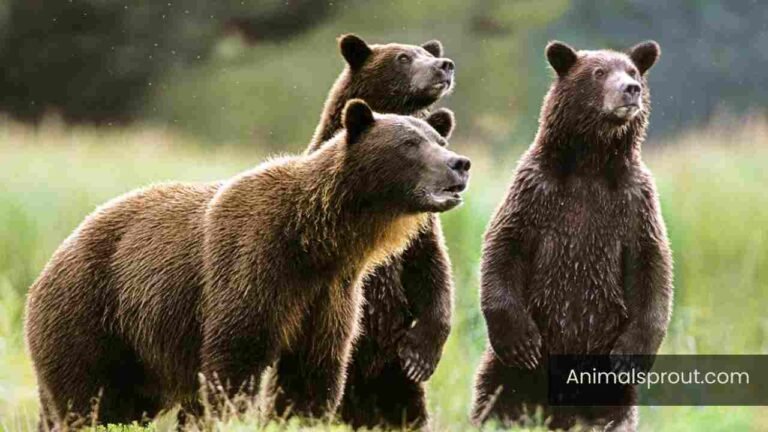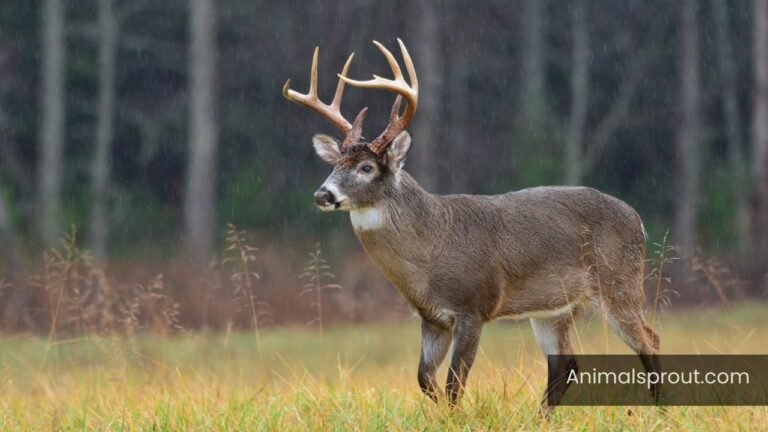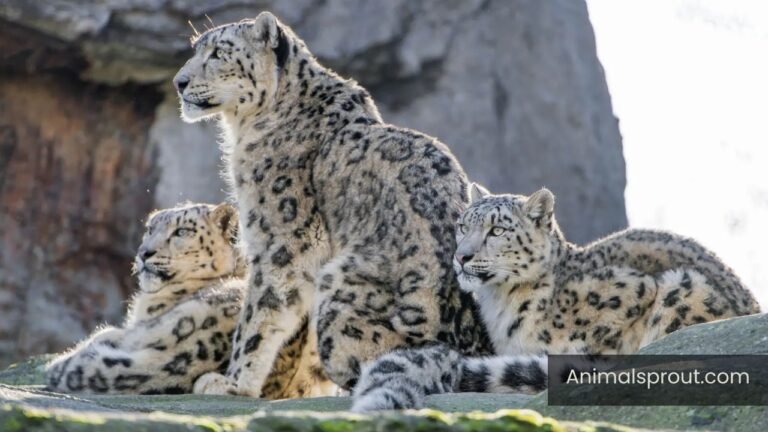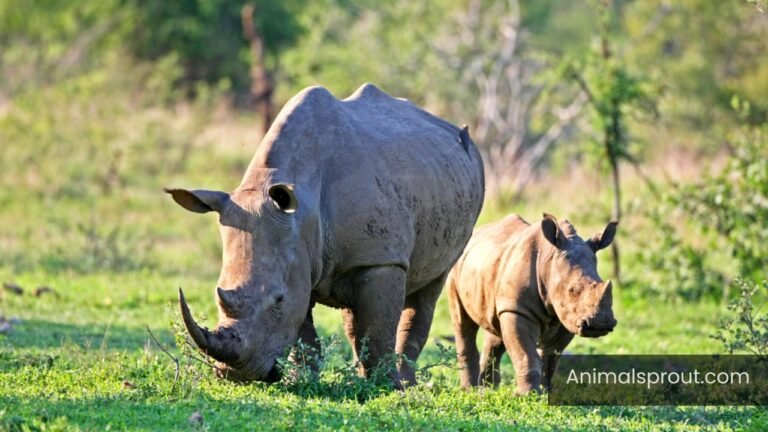Explore Top 20 Animals That Are Loud (With Pictures)
If you think your neighbor’s dog is noisy, wait until you hear a howler monkey! The animal kingdom is filled with creatures that make their presence known through sound, some with decibels that could rival a jet engine. This article on Animals That Are Loud will introduce you to those extraordinary species and examine why their sounds are essential for survival and social interaction. Prepare to discover the incredible variety of noises that echo through nature and their surprising significance.
List of Animals That Are Loud
Below is the list of loud animals in the world:
| Number of Animals | List of loud animals in the world |
| 1 | Sperm Whale |
| 2 | Blue Whale |
| 3 | Elephant |
| 4 | Lion |
| 5 | Baboon |
| 6 | Greater Bulldog Bat |
| 7 | Screaming Piha |
| 8 | Northern Elephant Seal |
| 9 | Moluccan Cockatoo |
| 10 | Tiger |
| 11 | Beluga Whale |
| 12 | North American Bullfrog |
| 13 | Rooster |
| 14 | Peacock Mantis Shrimp |
| 15 | Hyena |
| 16 | Coquí Frog |
| 17 | Howler Monke |
| 18 | Wolf |
| 19 | Green Grocer Cicada |
| 20 | Kakapo |
Sperm Whale
Scientific Name: Physeter macrocephalus
Class: Mammalia
Diet: Carnivore
Sound Level: 230 decibels
The sperm whale, famed for its remarkable size and elusive nature, is also the loudest animal on Earth, producing vocalizations that can reach up to 230 decibels. This incredible volume surpasses that of a jet engine, creating a form of underwater communication that often travels for miles across the ocean depths. These clicks and codas aren’t just for show; they serve as vital tools for navigation, social interaction, and hunting. The echolocation abilities of these giants allow them to locate prey in the dark abyss of the ocean, showcasing a sophisticated method of survival that few other creatures can rival.
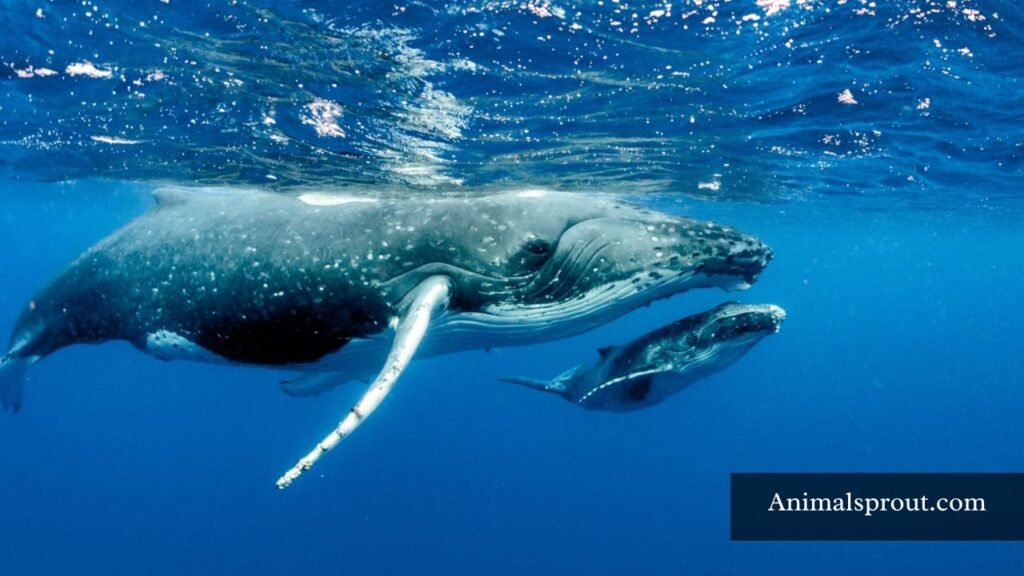
Interestingly, sperm whales exhibit a complex social structure and communicate through a “dialect” unique to their pod, much like human languages. Researchers are only beginning to understand the intricacies of these sounds, pondering whether they hold emotional weight akin to human expression. This rich tapestry of communication and interaction suggests a fascinating depth of intelligence, potentially redefining our perception of marine life. As oceanic habitats face mounting threats, understanding the significance of these vocal marvels becomes crucial — not just for the conservation of sperm whales, but for the health of ocean ecosystems as a whole.
Blue Whale
Scientific Name: Balaenoptera musculus
Class: Mammalia
Diet: Carnivore
Sound Level: 188 decibels
The blue whale, the largest animal on the planet, is also one of the loudest. Its calls, which can reach up to 188 decibels, resonate through the ocean and can be heard hundreds of miles away. These vocalizations are not just for show; they serve critical functions in communication and navigation. Interestingly, the deep and low frequencies allow them to communicate over long distances, helping them find mates and maintain social structures in the vast, underwater expanse.
What’s captivating about these immense creatures is how sound plays a pivotal role in their survival. As climate change impacts ocean temperatures and ice coverage, the acoustic environment is changed, which can disrupt communication channels critical for mating and foraging. Scientists are now exploring how shifts in ambient noise from human activity could further complicate the lives of these gentle giants. Understanding the blue whale’s soundscape offers a unique lens into the health of marine ecosystems and sparks conversations about the balance between human activity and the natural world.
Elephant
Scientific Name: Loxodonta africana
Class: Mammalia
Diet: Herbivore
ESound Level: 117 decibels
Elephants are renowned for their deep, resonant vocalizations that can travel over vast distances. Their unique calls, ranging from low rumbles to high-pitched trumpets, form a complex language that reflects not just their emotional states but also their social structures. Interestingly, these massive beings can communicate through infrasound — sounds below the threshold of human hearing — allowing them to engage with fellow elephants miles away. This sonic form of long-distance communication showcases their remarkable social intelligence and adaptability.
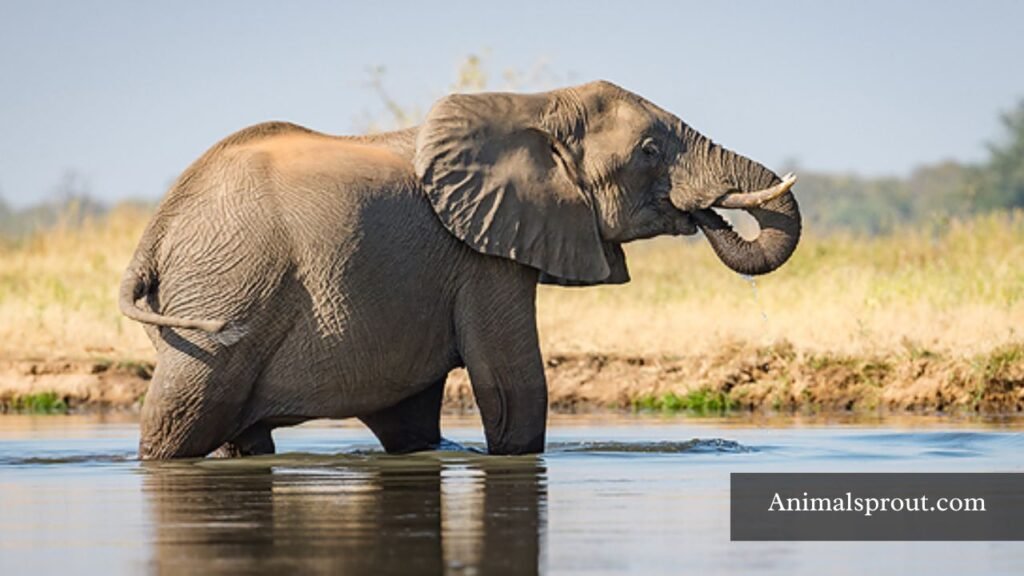
What often surprises people is how elephants use sound not just for communication, but also for navigation and social bonding. Their vocalizations can convey alarms for nearby dangers or signal the presence of food, ultimately fostering a cohesive social environment. Moreover, recent studies suggest that these mighty creatures possess a form of empathy, employing their loud calls to comfort distressed herd members. This interdependence underlines the role of sound as a vital tool for maintaining their intricate social networks, adding a profound layer to our understanding of these extraordinary animals.
Lion
Scientific Name: Panthera leo
Class: Mammalia
Diet: Carnivore
Sound Level: 114 decibels
The roar of a lion is one of nature’s most powerful sounds, resonating across vast plains and invoking both awe and respect. It can be heard from up to five miles away, serving as a form of long-distance communication among prides. This remarkable vocalization not only establishes territory but also helps coordinate social dynamics within the group, highlighting the intricate relationships that define lion society.
Interestingly, lions don’t just roar; they also engage in a variety of vocalizations, each with its own purpose. The soft grunts and growls exchanged between pride members signify comfort and cohesion, illustrating a deep bond among these social animals. Moreover, the intensity of a lion’s roar varies based on context — ranging from a menacing challenge to a protective display. This versatility in vocal expression reveals the lion’s intelligence and adaptability, making it not just a symbol of strength, but also of sophisticated social interaction in the wild.
Baboon
Class: Mammalia
Diet: Omnivore
Sound Level: 80–90 decibels
Baboons are often thought of as the clowns of the animal kingdom, with their boisterous antics that can be both amusing and bewildering. Yet, it’s their vocalizations that truly set them apart. With a complex repertoire of barks, howls, and grunts, baboons communicate in a way that reflects their intricate social structures. Researchers have found that these vocalizations can convey everything from warning calls about predators to expressions of excitement during playtime, making their vocal range as diverse as their living environments.
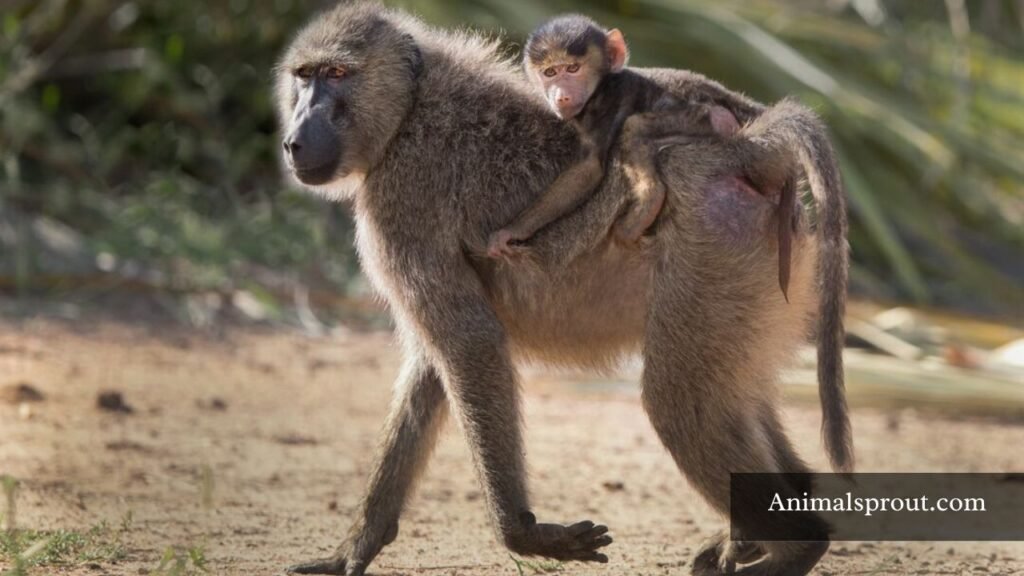
Interestingly, each species of baboon has its own distinct vocal characteristics, shaped by its habitat and social dynamics. For instance, olive baboons employ a series of pant-hoots that can be heard over a mile away, making them the loudest among their peers. This powerful sound serves not just as a means of communication but also as a bonding tool within troops, helping to maintain cohesion in their complex social networks.
Greater Bulldog Bat
Scientific Name: Noctilio leporinus
Class: Mammalia
Diet: Carnivore
Sound Level: 140 decibels
The Greater Bulldog Bat is a marvel of the nocturnal world, notorious for its impressive vocalizations. Capable of producing ear-piercing calls that can reach up to 140 decibels, this bat’s echolocation technique serves dual purposes: it navigates through the dark while also attracting potential mates. Moreover, the Greater Bulldog Bat’s sheer volume sets it apart from its quieter cousins. This audacious vocal prowess may seem an evolutionary gamble, but it showcases a fascinating adaptation: while loud calls may attract predators, they also mark territory and communicate strength.
Screaming Piha
Scientific Name: Lipaugus vociferans
Class: Aves
Diet: Frugivore
Sound Level: 116 decibels
The Screaming Piha, a bird native to the lush forests of South America, is often mistaken for a mammal due to its hauntingly loud call. Its echoing cry, reminiscent of a human scream, can travel up to two kilometers through dense foliage, making it a startling presence in its habitat. This distinctive sound serves not just to attract mates but also to establish territory, highlighting the bird’s role in an intricate web of communication in the rainforest ecosystem.
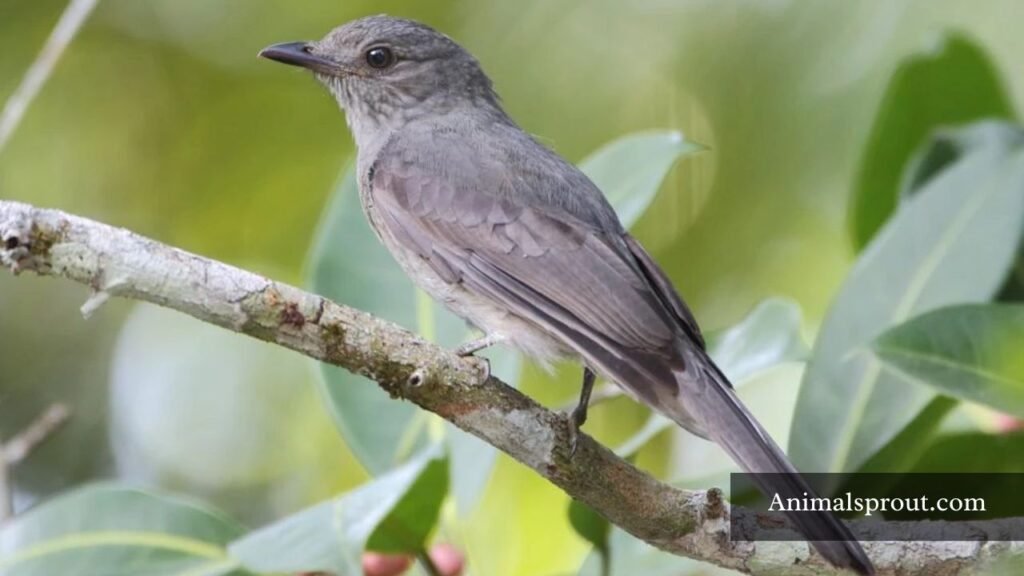
Interestingly, the Screaming Piha’s vocal abilities are not merely a product of its size but rather a fascinating adaptation. Its vocalizations evolve seasonally, reflecting changes in environmental factors and social dynamics within its habitat. While many birds rely on visual cues, the Screaming Piha’s prominent screams offer a unique auditory signature, establishing identity and presence amid the cacophony of rainforests teeming with life. This adaptation speaks to a symbiotic relationship with its environment, where sound can be both a beacon and a warning.
Northern Elephant Seal
Scientific Name: Mirounga angustirostris
Class: Mammalia
Diet: Carnivore
Sound Level: 126 decibels
The northern elephant seal is a master of sound in the animal kingdom, captivating researchers and wildlife enthusiasts alike. Males, often weighing up to 5,000 pounds, can emit roars that resonate across miles. This vocal power serves not only to establish dominance during the breeding season but also creates a unique symphony of authority that reverberates through their coastal habitats. Their calls, deep and resonant, are amplified by their large, inflatable noses, often likened to musical instruments echoing across the ocean’s surface.
Interestingly, these seals aren’t just loud for the sake of it; their vocalizations play a crucial role in social structure and mate selection. The more impressive the roar, the more likely a male is to attract mates and fend off competitors. This audio rivalry leads to an intricate dance of sound, where the loudest calls usually indicate health and vitality. Furthermore, females use softer, more subtle calls to communicate with their young, showcasing the nuanced language that exists within these seemingly lumbering creatures. The dynamic interplay of vocalization not only enriches their social interactions but also highlights the sophistication hidden beneath their blubbery exteriors.
Moluccan Cockatoo
Scientific Name: Cacatua moluccensis
Class: Aves
Diet: Omnivore
Sound Level: 120 decibels
The Moluccan Cockatoo, with its unmistakable peachy feathers and striking crest, is not just a visual marvel but also one of the loudest birds in the avian world. Known for their powerful vocalizations, they can produce a cacophony that ranges from raucous screeching to melodious whistling. This impressive vocal repertoire serves multiple purposes: it communicates with flock members, establishes territory, and even expresses joy or distress. For owners, these spirited birds can turn a quiet home into a vibrant hub of sound, providing a daily reminder of their presence and personality.
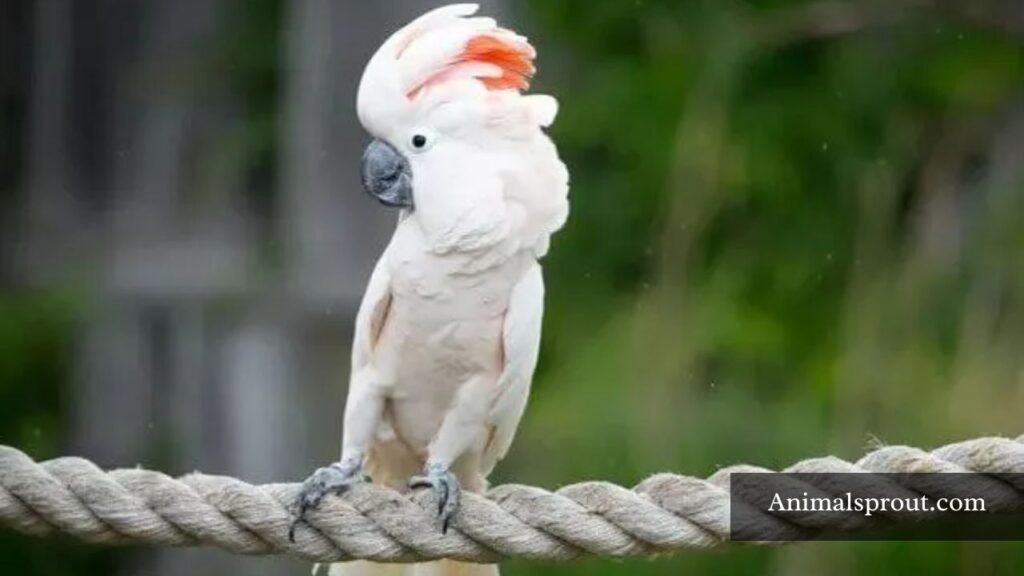
However, the Moluccan Cockatoo’s vocal prowess comes with its challenges. Their loud calls, while enchanting to some, can be disruptive and require strategic management, especially in urban settings. Understanding their need to vocalize helps caregivers create an enriched environment that allows for expression without driving everyone else to distraction. Creating a routine that includes interactive play, training, and socialization can mitigate excessive noise while also enhancing the bond between bird and owner. Thus, the Moluccan Cockatoo serves as both a challenge and a joy, reminding us that with great volume comes a great need for understanding and connection.
Tiger
Scientific Name: Panthera tigris
Class: Mammalia
Diet: Carnivore
Sound Level: 110 decibels
Tigers are not just the largest cats in the world; they also possess a vocal repertoire that can leave even the most seasoned wildlife enthusiasts in awe. Their roars, which can be heard up to two miles away, serve multiple purposes: establishing territory, attracting mates, and communicating with cubs. This powerful vocalization underscores their status as apex predators, sending a clear message to other wildlife of their dominance in the ecosystem.
But the tiger’s vocalizations extend beyond the iconic roar. They also produce a range of sounds, including growls, chuffs, and hisses, each with its own context and meaning. For instance, a soft chuff can indicate comfort and affection between a mother and her cubs, while sharp hisses serve as a warning to potential threats. This diversity in communication highlights not only their intelligence but also their social complexity. In a world where habitat loss and poaching threaten their survival, understanding the nuances of tiger communication can play a crucial role in conservation efforts, reminding us of the intricate relationships that exist in the wild.
Beluga Whale
Scientific Name: Delphinapterus leucas
Class: Mammalia
Diet: Carnivore
Sound Level: 150–170 decibels
The beluga whale, often affectionately dubbed the “canary of the sea,” is renowned for its vocal prowess. Unlike many marine creatures, belugas possess a complex range of vocalizations that can include clicks, whistles, and even grunts, allowing them to communicate effectively in the deep, chilly waters of the Arctic. This rich repertoire not only aids in social interactions within pods but also plays a crucial role in navigation and hunting, highlighting their intelligence and adaptability in a challenging environment.

What sets belugas apart is their ability to produce sounds across a wide frequency spectrum, which helps them bypass the sound distortions that can occur in icy waters. Their vocal versatility is not merely a fascinating trait; it serves practical purposes, such as locating prey in the dark depths of the ocean. Interestingly, these whales are known to mimic other marine sounds, showcasing their cognitive skills and adaptability.
North American Bullfrog
Scientific Name: Lithobates catesbeianus
Class: Amphibia
Diet: Carnivore
Sound Level: 119 decibels
The North American Bullfrog is not just an ordinary amphibian; it’s a sonic powerhouse of the wetlands. Known for its distinctive, deep croak, this lively creature can project its voice over a mile, making it the ultimate loudmouth of the animal kingdom. The sound serves multiple purposes: attracting mates, warding off rivals, and asserting territory in the ever-competitive marshes. Imagine standing by a serene pond, only to be greeted by the raucous symphony of bullfrogs, each call a bold declaration of presence and dominance.
Interestingly, these rebels of the night aren’t all about volume. Their croaking patterns can vary significantly depending on environmental factors like temperature and humidity. On warmer summer nights, the bullfrog’s call resonates more, intensifying in pitch as the chorus grows larger. This adaptability not only showcases their resilience but also reflects the intricate relationship between these animals and their habitats. As an apex predator among frogs, it balances local ecosystems by controlling populations of insects.
Rooster
Scientific Name: Gallus gallus domesticus
Class: Aves
Diet: Omnivore
Sound Level: 90–100 decibels
The rooster, often heralded as the quintessential farm animal, is much more than just a morning alarm clock. With their vibrant plumage and assertive demeanor, these feathered creatures embody a fascinating blend of beauty and bravado. Their distinct crowing not only signals the dawn but also serves as a form of communication, establishing territory and asserting dominance within their flock. This ritualistic call, which varies among breeds, can create a unique soundscape that brings life to any rural morning.
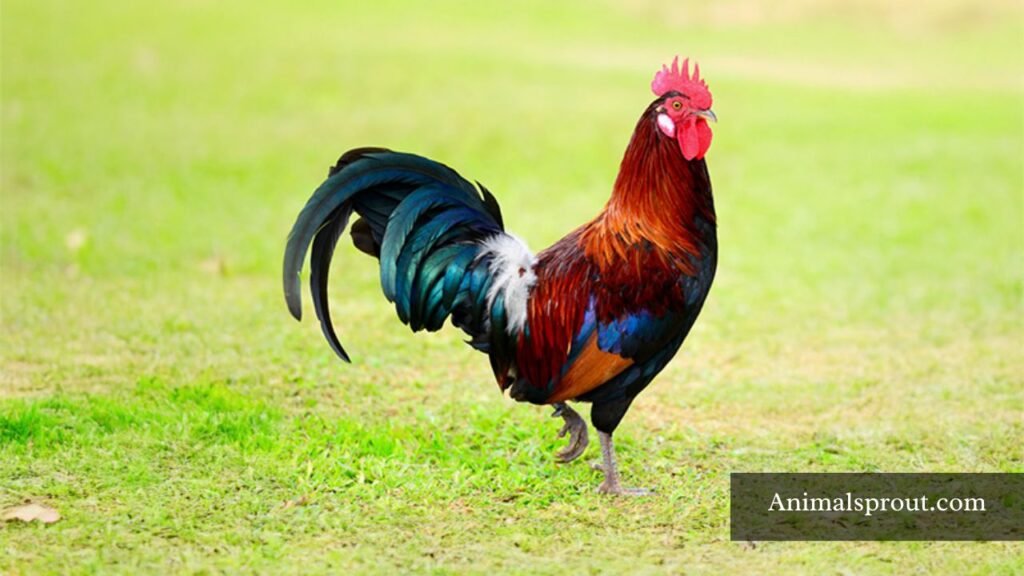
Interestingly, roosters are attuned to their environment in remarkable ways. Research suggests they can even sense the earth’s magnetic field, allowing them to crow at precisely the right moment as dawn approaches. This innate ability adds a layer of complexity to their role on the farm, highlighting their importance beyond just being loud. Roosters exhibit intricate social behaviors, forming hierarchies within their groups that govern everything from feeding to mating.
Peacock Mantis Shrimp
Scientific Name: Odontodactylus scyllarus
Class: Malacostraca
Diet: Carnivore
Sound Level: 200 decibels
The peacock mantis shrimp is not just a marvel of nature due to its vibrant colors; it’s also an auditory sensation beneath the waves. This stunning crustacean produces clicks that can surpass 200 decibels, comparable to a gunshot. These sounds serve various purposes, from communication to mating rituals, showcasing an ecological role that extends far beyond their dazzling appearance. Researchers have discovered that the clicks can create cavitation bubbles, which collapse with such force that they generate shockwaves, essentially amplifying their sound and startling potential predators or rivals.
What makes the peacock mantis shrimp’s sound even more fascinating is its basis in their unique claw structure. Unlike most marine life, which relies on vocalizations, this creature employs a mechanical technique to create its thundering clicks. This adaptation not only reflects the ingenuity of evolution but also positions the mantis shrimp as a key player in the underwater symphony.
Hyena
Scientific Name: Crocuta crocuta
Class: Mammalia
Diet: Carnivore
Sound Level: 112 decibels
Hyenas, often misunderstood, are far more than just their notorious cackling laugh; they are fascinating social creatures that boast remarkable intelligence and complex societal structures. Their infamous vocalizations, which can range from giggles to whoops, serve as an intricate form of communication, allowing them to convey everything from alarm calls to social bonding within their clans. These vocalizations are not mere sounds but a rich language of emotion and intent, showcasing the depth of their interactions in the often harsh environments they navigate.
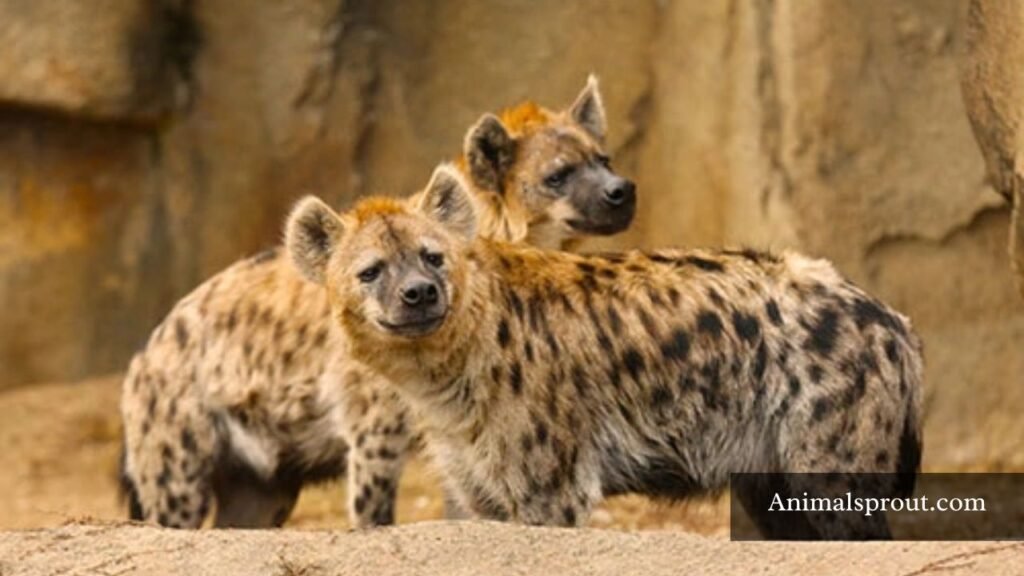
What sets hyenas apart from their predatory peers is their unique role as both scavengers and hunters, exhibiting an adaptability that speaks to their evolutionary success. They often collaborate on hunts, displaying a level of teamwork rarely seen in other carnivores, and can consume nearly every part of their prey, leaving little waste. This efficiency not only highlights their survival skills but also contributes to the overall health of their ecosystem, proving that even the loudest animals play a crucial role in maintaining balance in nature.
Coquí Frog
Scientific Name: Eleutherodactylus coqui
Class: Amphibia
Diet: Carnivore
Sound Level: 90–100 decibels
The Coquí frog, a tiny amphibian native to Puerto Rico, has an unassuming appearance but a remarkably loud presence. These frogs are best known for their distinctive, musical calls that resonate through the rainforests at night, creating a symphony of sound that has become emblematic of Puerto Rican culture. Interestingly, the name “Coquí” is derived from the sound they make — an enchanting two-note melody that can be heard from miles away, drawing both locals and tourists into the island’s rich natural landscape.
Beyond their melodious calls, Coquí frogs also offer intriguing insights into the ecosystem’s health. Their presence indicates a thriving environment, particularly in lush, humid areas, as they rely on clean water and rich vegetation for survival. However, the advent of invasive species and habitat loss poses significant challenges for these frogs. Conservation efforts are essential not only to protect these vibrant creatures but also to maintain the delicate balance they help sustain in Puerto Rico’s ecological tapestry.
Howler Monkey
Class: Mammalia
Diet: Herbivore
Sound Level: 128 decibels
The howler monkey, aptly named for its astonishing vocal prowess, is often referred to as the loudest land animal. With calls that can penetrate dense tropical forests and echo over three miles, these primates utilize their vocalization for a range of social functions, from marking territory to strengthening group cohesion. But what’s fascinating is the mechanism behind their impressive vocal abilities; their enlarged hyoid bones act as resonating chambers, amplifying their calls to astonishing decibel levels.
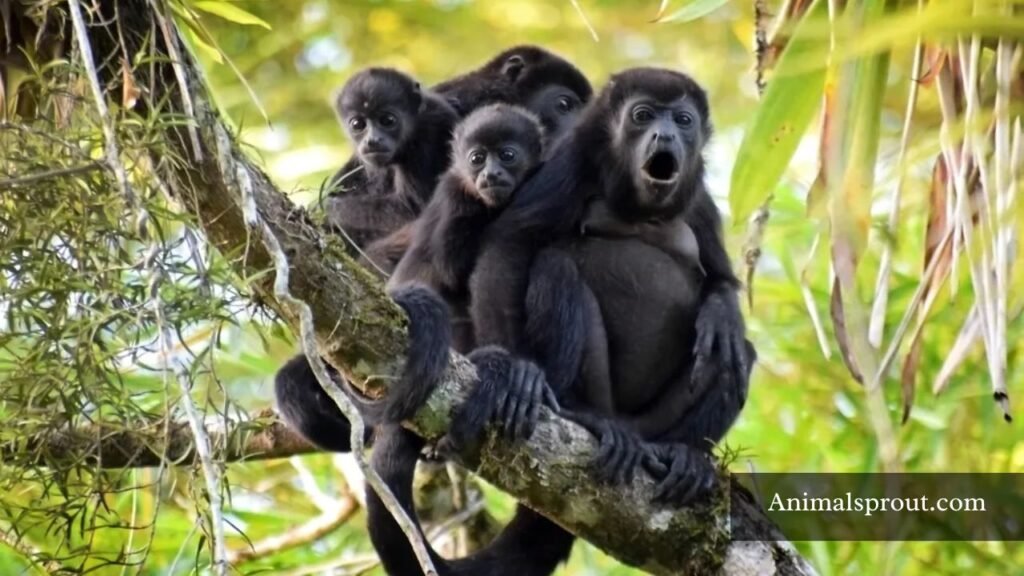
Their choruses, often echoing the dawn, create a beautiful yet haunting symphony in the wild. However, these vocal characteristics are not merely for show; they play a vital role in the survival of these monkeys. By establishing their territory through sound, howler monkeys help reduce physical confrontations with rivals, saving energy and establishing hierarchy without resorting to violence. In an era of rapid deforestation, the fate of these magnificent creatures hangs in the balance, as their calls are not only unique to their identity but also an essential thread in the intricate tapestry of their ecosystem.
Wolf
Scientific Name: Canis lupus
Class: Mammalia
Diet: Carnivore
Sound Level: 90 decibels
Wolves are the undisputed masters of vocal expression in the animal kingdom. Their howls resonate through the forests, creating a haunting symphony that serves multiple purposes. Not merely a call to the pack, each howl conveys emotional tones — from excitement during a hunt to the sorrow of a lost companion. This rich vocalization is a complex blend of sounds, oscillating through pitches that can travel over vast distances, sometimes up to six miles.
What’s fascinating is how these vocalizations underscore the wolves’ social dynamics. When a pack howls together, it’s not just a chorus; it’s a strategic move. It strengthens bonds and reaffirms hierarchies, ensuring cohesion among members. In essence, their vocal prowess isn’t just about noise — it’s a sophisticated social language steeped in survival and connection.
Green Grocer Cicada
Scientific Name: Cyclochila australasiae
Class: Insecta
Diet: Herbivore
Sound Level: 120 decibels
The Green Grocer Cicada is a marvel of sound in the animal kingdom, capable of producing a cacophony that resonates through the summer air. With a song that can reach up to 120 decibels, this insect embodies the essence of Australia’s warm months, acting as both a natural alarm clock and a romantic serenade for potential mates. However, their impressive sonic prowess goes beyond sheer volume; the intricacy of their calls reveals a sophisticated communication system, allowing males to attract females while warding off rival suitors.

Intriguingly, the Green Grocer Cicada’s unique sound is produced not through vocal cords but by specialized membranes called tymbals. This evolutionary adaptation illustrates not just nature’s ingenuity but also how sound serves as a critical survival tool.
Kakapo
Scientific Name: Strigops habroptilus
Class: Aves
Diet: Herbivore
Sound Level: 132 decibels
The kakapo, often referred to as the world’s only flightless parrot, is a unique gem in New Zealand’s biodiversity crown. What sets this remarkable bird apart isn’t just its inability to soar through the skies but its captivating and raucous courtship calls that resonate through the forest. During mating season, male kakapos engage in an enthralling ritual, producing deep, booming sounds that can travel over considerable distances. This acoustic display is more than a mere serenade; it’s a strategic maneuver in the wild, helping females locate potential mates amidst the dense foliage.
These fascinating vocalizations are reflective of the kakapo’s social structure and evolutionary quirks. Unlike many birds that rely on plumage to attract attention, the kakapo’s charm lies in its loud and memorable calls, transforming the forest into a vibrant concert hall. The cacophony serves a dual purpose — not only does it attract mates, but it also establishes territory, showcasing the kakapo’s multifaceted communication skills. As conservation efforts continue to protect this endangered species, the kakapo’s distinctive voice remains a poignant reminder of the interconnectedness of life, echoing through New Zealand’s wilderness as both a call to action and a celebration of nature’s wonders.
Readmore: Explore Top 18 Independent Animals In The World.
Final Thoughts
The world of loud animals is as diverse as it is fascinating. From the raucous calls of parrots to the thunderous roars of lions, these creatures use sound as a vital tool for communication, attracting mates, or establishing territory. Understanding the reasons behind their vocalizations not only enriches our knowledge of wildlife but also deepens our connection to nature. As we continue to explore the habitats of these remarkable animals, we must remember the importance of conservation efforts to protect their environments. Let’s be mindful of our impact on these creatures and advocate for their preservation.
FAQs
What is the loudest animal in the world?
The loudest animal in the world is the sperm whale. Their clicks can reach up to 230 decibels, which is louder than a jet engine. These sounds serve various purposes, like communication and navigation in the deep ocean.
What animal makes a loud screeching noise at night?
The barn owl is well-known for its eerie, screeching call at night. This distinctive sound often echoes through rural areas, especially near farmlands and open fields. The call isn’t just alarming; it’s part of their mating rituals and territory defense.
What animal is loud and annoying?
One animal that often gets described as loud and annoying is the common rooster. While they might be charming at sunrise, their crowing can start as early as 3 AM, disrupting a peaceful morning. Their calls are often loud and repetitive, which can drive anyone nearby absolutely crazy.


